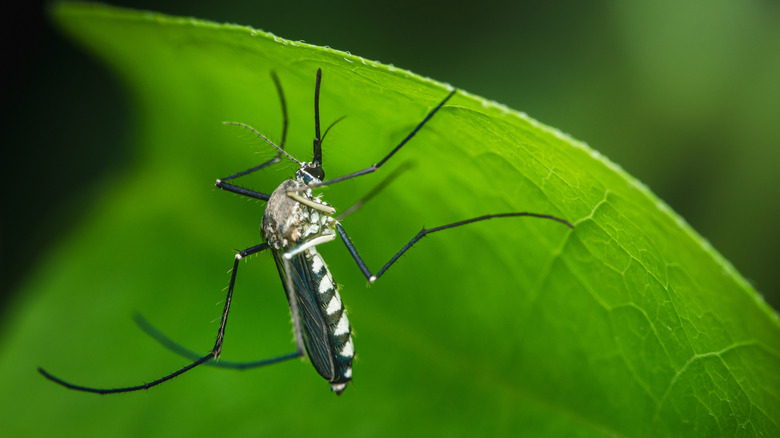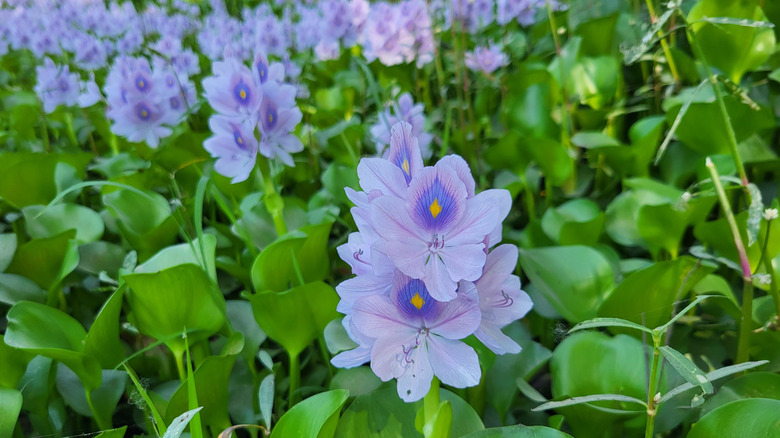The Popular Flower You Should Avoid Planting If You Don't Want Mosquitoes In Your Yard
Warmer weather brings with it many wonderful things like summer barbecues and a new gardening season, but it also harkens the rise of one of humanity's greatest foes: the mosquito. Mosquitoes are potentially deadly insects that can transfer disease from person to person by biting them. So it's important to take the proper precautions to keep mosquitoes off your property, especially if you live somewhere they are prevalent. One way to keep mosquitoes away is to avoid drawing them in in the first place, like with this mosquito-attracting shrub that should be removed from any garden. That also means removing mosquito-attracting flowers, such as the popular yet problematic water hyacinth.
The common or floating water hyacinth (Eichhornia crassipes) is an aquatic plant originating in South America and invasive in the United States. It floats on the water's surface and can be identified by its smooth, rich green leaves and lavender flowers, with a unique yellow dot on the top petal. Though eye-catching, water hyacinth provides the perfect habitat for mosquitoes, which is why you should avoid planting it and contact your local wildlife department if you see it growing naturally.
Water hyacinth is a breeding ground for mosquitoes
Water hyacinth makes for a perfect mosquito habitat thanks to its thick mass of foliage. Mosquitoes are already big fans of water (especially standing water, like in ponds) since it's where they lay their eggs. Combine the pests' favorite habitat with a crop of water hyacinth, which naturally provides a dark, wet hiding spot for bugs, and you've got a recipe for disaster. Additionally, these floating bergs of leaves can make life harder for other local wildlife to utilize the water source and cut off light to any submerged flora — further stagnating the water. Aquatic plants aren't all bad, though. Some aquatic plants are perfect for enhancing natural water features.
If you have water hyacinth on your property, the easiest way to remove it is to simply pull it out of the water. While it does have long roots that extend down, you should be able to remove it without too much effort. Water hyacinth isn't toxic to humans, but since it can hide mosquitoes, wear protective clothing and take care when extracting the plant. To get rid of any remaining mosquitoes, try these DIY mosquito traps and repellents.

